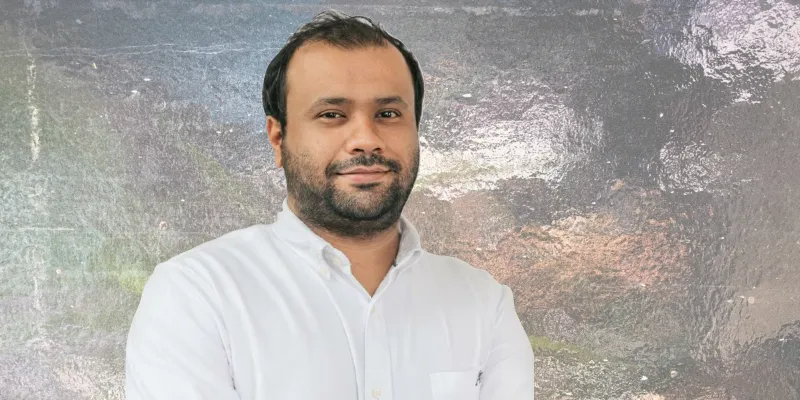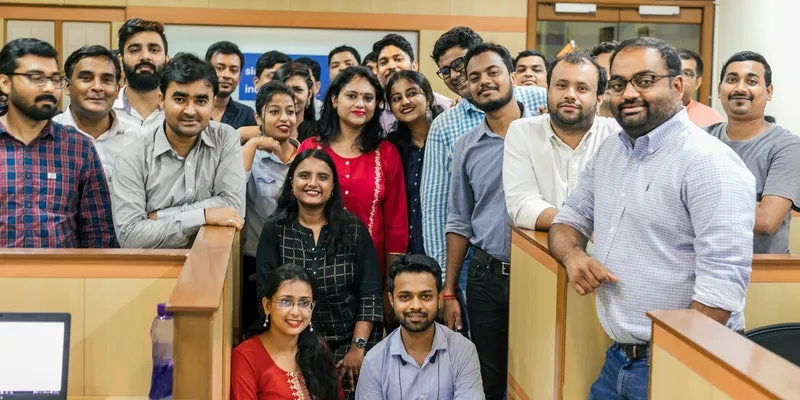This entrepreneur’s approach to B2B ecommerce earns his procurement platform Rs 2.5 Cr per month
Naman Shah’s NowPurchase has built an end-to-end, full-stack industrial procurement platform for foundries in West Bengal and gets over 1,000 orders each month.
As the ecommerce wave swept through the country, Kolkata-based entrepreneur Naman Shah realised that traditional, B2B businesses were being left out.
Naman, who worked in several US and Singapore startups, felt the digital and ecommerce revolution was only transforming the way new-age B2C companies and consumer brands did business.
He believed that in the last decade, nothing had changed in the way B2B companies did their industrial procurement, planning sales, accounts, etc.
Naman started looking for a potential business opportunity. He approached management and senior officials at his family business Nipha to find out more.
He was told the large engineering and manufacturing company found industrial procurement a tedious task. It was tough managing a large, unorganised, and fragmented base of supplier small and medium enterprises (SMEs).
He got the same response after talking to 25 factories in Delhi-NCR, Kolkata, and Mumbai.
“Wherever there are large manufacturing companies, ancillary industries and small suppliers always spring up. Procurement from these vendors can become unmanageable when things like tax filing become complicated due to the vendors not filing their taxes,” Naman says.
Driven by a goal to make industrial procurement easy by solving a multitude of pain points, Naman and his cousin Aakash started in 2017. They wanted the bootstrapped company to act as a B2B ecommerce platform that helped companies across various industries.

NowPurchase cofounder Naman Shah
A rocky start
It was not long before Naman realised he had bitten off more than he could chew. By trying to serve too many industries at the same time, NowPurchase was unable to make a place for itself in the supply chain.
“Every industry has its metric to optimise for, and in the B2B space, I found the Share of Procurement Wallet (SOPW) was critical. For example, as a B2B ecommerce company, I could earn Rs 10 crore out of Tata’s Rs 1,000 crore yearly purchases. But this would mean our SOPW for Tata was just one percent,” he explains.
At such a low SOPW, there was no way large companies would consider NowPurchase an indispensable part of their supply chain. Because NowPurchase was replaceable, it couldn’t command good margins and negotiate favourable terms of payment.
“Tech intervention in B2B procurement was low as it was largely involved in manual and labour-intensive processes. Working with large buyers, it was not possible to get more than 10 percent margin on the buy-sell margin after accounting for the cost of logistics. We realised that the existing B2C ecommerce model would not work in the B2B space. If it did, Flipkart and Amazon would have pounced on it years ago,” he says.
Further, NowPurchase followed a marketplace-like model where it didn’t have full control of the supply chain. It could neither guarantee the reliability of products nor ensure their timely delivery.
“Customers wanted timely delivery. Factories couldn’t afford to halt production even briefly if raw materials offered by us at discounts hadn’t arrived on time,” he says.
Naman realised it was up to him to find a way to make his company a critical supply partner for his clients, take a larger SOPW, and solve the issue of timely delivery.
The pivot
Naman realised that the pivot for his project was right under his nose. The state of West Bengal, where NowPurchase was based, had around 500 foundries (factories for casting metal).
“The raw materials and products purchased by these foundries were of a consumable nature, and they had a repeat cycle. But the vendors who sold these raw materials were all part of a fragmented market,” he says.
Naman wanted to focus on this industry alone. He and his product head Ankan Adhikari decided to build a full-stack, end-to-end procurement solution for foundries, and also consolidate the vendor base so that he could command a higher SOPW from the foundries.
"Our role as a platform would be to enable interactions between foundries and suppliers by providing an open infrastructure for them to participate. This business model was an obvious choice for us because of the disproportionate impact and scale it could provide," he says.
Further, being a crucial part of the buyers’ supply chain also meant steady and predictable cash flows and a roadmap towards being cash positive.
To make the shift, Naman would have to adopt a just-in-time, inventory-like model. This would give him control over the supply chain and the power to ensure timely delivery.
This showed how different Naman’s approach towards B2C and B2B ecommerce was. Amazon and Flipkart boasted of deep pockets lined by foreign investments and were happy to bleed to capture market share in the B2C segment across various industries and categories.
And here was a bootstrapped industrial procurement platform from Kolkata trying to focus on one industry at a time and be cash positive.
“Unlike B2C ecommerce, when it came to building an end-to-end, full-stack solution for a particular industry, we realised it was imperative to include all products required by buyers,” he says.

The NowPurchase team
Cracking the SME segment
Naman met several foundry owners to explain the new concept. These companies, which were usually two to three decades old, had a fixed way of doing business and understood their space well. They would stick to the same supplier, and wouldn’t trust a fresh face like Naman’s.
“We were the new kids on the block telling them how they should do their industrial procurement. Initially, they had inhibitions about us. We told them we’d take the raw materials back if they weren’t happy,” Naman says.
Fortunately for Naman, he had built trust with a few foundries. With NowPurchase, he had worked with some foundries before the pivot. He approached them to pilot the idea.
The foundries would upload their purchase list on NowPurchase, and mention how often they require the raw materials. NowPurchase’s system would then dive into its consolidated list of foundry-specific supplier products. The suppliers would be verified beforehand. The system would then pull up quotations for the purchases desired by the foundries.
“On the backend, we ran a marketplace, but we didn’t disclose vendors’ names,” Naman says.
Based on the quotations that matched their expectations, the foundries would place and schedule orders for a range of raw materials or products.
The individual products would be shipped from the vendors to NowPurchase’s fulfilment centres (FCs). Here, they’d be matched and grouped together if they were part of a larger order. After verifying, NowPurchase would dispatch the order to buyers via outsourced delivery partners.
“Instead of a foundry getting four separate shipments, they would get one package. We chose not to have personal delivery assets because it made more economical sense to partner with a third party delivery provider,” Naman says.
NowPurchase also leveraged WhatsApp’s API to allow foundries to use the messaging service for scheduling orders and sending reminders. Naman had seen them use WhatsApp before he entered the picture.
“We made some mistakes initially. Sometimes the products delivered were incorrect, or the communication we tried through WhatsApp did not perform as expected,” he says.
However, NowPurchase corrected its mistakes and even the foundries didn’t mind a few errors because they trusted Naman.
Numbers and the way forward
The procurement platform went ahead with the same business model and approached more foundries to build a larger customer base. Today, Naman claims to have almost 100 foundries on NowPurchase.
“Foundries and the suppliers are a close-knit community and they talk to each other a lot. They hear about us from each other and come to us. Suppliers ask us to help sell to foundries and liquidate their stock of raw materials,” Naman says.
NowPurchase strategically tapped into industry chambers and trade associations to expand its reach. Naman actively engaged with these organisations through seminars and conferences where he was able to reach multiple buyers at once.
But he couldn’t completely ignore reaching out to more foundries on an individual basis. Naman estimates that industry associations may have data on around 200 members, but there was no data available for 300 other foundries.
“We went to them directly as there was still a requirement of having people on the ground. We gave out pamphlets and letters that explained what we did,” he says.
Today, NowPurchase’s strategy for B2B industrial procurement sees it clock Rs 2.5 crore in gross revenue every month, claims Naman. It also gets around 1,000 orders every month.
But these numbers include sales from NowPurchase’s old ecommerce approach, which is still being phased out.
“For industrial procurement, the average order size is between Rs 20,000 to Rs 25,000. The top-selling categories are ferroalloys, abrasives, foundry resins, power tools, etc.,” he adds.
The 50-employee company plans to expand. “We want to reach out to more foundries in places like Faridabad, Jharkhand and Odisha. At the same time, we are looking at applying our solution to other industries like steel, power, mining, and engineering located in West Bengal,” he explains.
The funds NowPurchase raised last year from Nipha’s investment arm will be used to invest in technology and in helping NowPurchase predict customers’ repeat cycles better. “By the end of this year, we might also talk to investors like early-stage funds and industry stalwarts,” Naman says.
(Edited by Javed Gaihlot)









